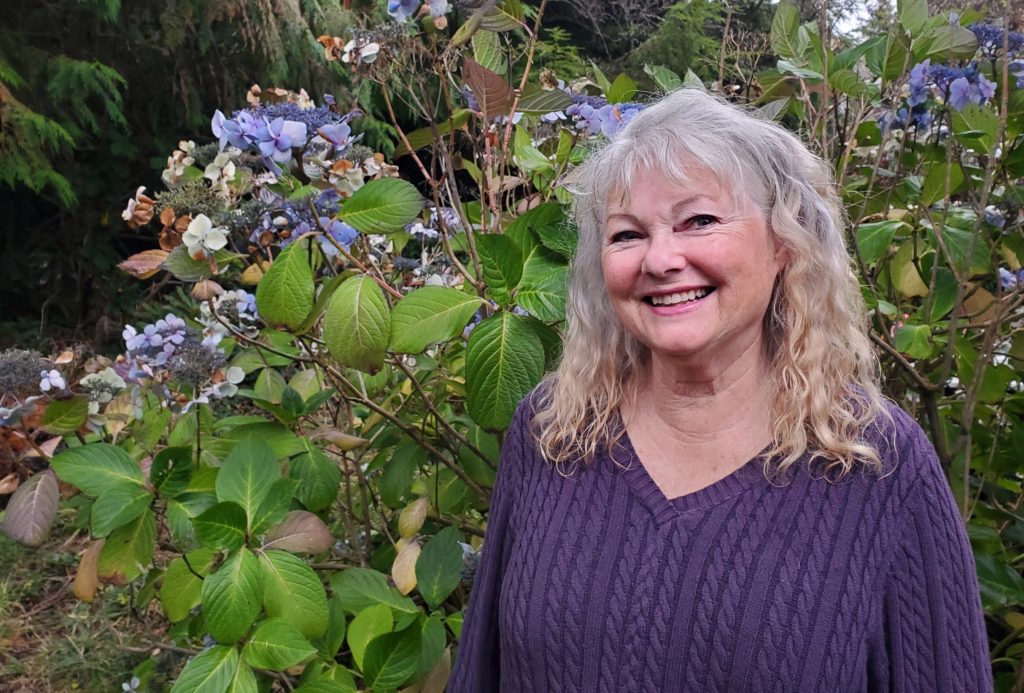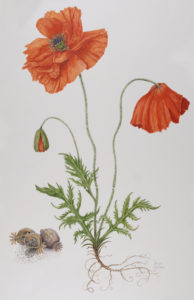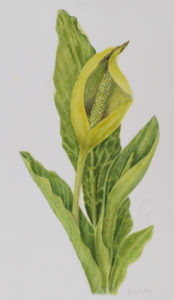
By Oregon ArtsWatch
YACHATS — If life had gone according to plan, Dana LaMair and her husband, Mark, would be living the life on a cruiser somewhere off the East Coast. Instead, the two now call home a spot six miles south of Yachats opposite the ocean – a decidedly wilder landscape than the calmer Eastern Seaboard.
“My son moved here with his family,” said LaMair, a former clinical psychologist. “One trip to Oregon, and we were smitten. Within four months, I closed my psychology practice, Mark sold his boat business and design studio, and we moved to the amazing Oregon central coast. We pinch ourselves daily and no, the rain or cold does not faze our wonder of the area.”

They made the move four years ago. Barely a year later, LaMair took up botanical art, and about two years ago she became a student in the Royal Botanic Garden Edinburgh’s three-year botanical illustration course.
LaMair shared her passion for the genre she describes as both art and science — “Science comes first and art second” — at the Coastal Arts Guild’s “Tea and Talk” Thursday, Nov. 3 in the Newport Visual Arts Center.
LaMair, who previously worked in bronze creating public art, has always been an avid naturalist, though she says she didn’t understand botanical art. But after moving here from Missouri – a journey she describes as akin to landing on another continent – she found herself drawn to the local flora. She began studying guidebooks and drawing local plants, trying to learn and memorize the new information.
“I hated not knowing the names and their ethnobotanical status,” she said. “There is an important term we use in botanical illustration: plant blindness. It references how many people overlook the importance of plants … which decreases their connection to the natural world.” LaMair enrolled in online classes to increase her technical skills and began to build her portfolio, at the same time studying contemporary botanical books. She noticed many of the artists, dominated by those from the United Kingdom, had attended botanical illustration schools.
There are only a few of them, and one of the most rigorous and hardest to get into is Royal Botanic Garden Edinburgh, said LaMair, who works in watercolors. “I think they take about 24 students worldwide. I decided to apply. I felt it was a call-to-arms for me to focus my energy on ecology and do my part in documenting the ever-dwindling botanical world.”

The shock of being accepted soon wore off as she faced the hard coursework. In the online classes, LaMair works with botanists who critique her work, then pass it on to tutors for further critique.
The primary purpose of botanical art is to depict the subjects as accurately as possible, she said. That includes the reproductive system and life cycle: the bud, full flower, flower in decay, desiccated.
“The desiccation, that’s real popular right now,” LaMair said. “Showing that even in death, the plants are still beautiful. Also, sometimes, the pollinators. That’s important. Sometimes we start out dissecting. We do a lot of research. And then we start the painting process. Once you dissect, research, and paint a plant, it is in your consciousness, and you will never forget.”
LaMair expects to graduate with a Diploma in Botanical Illustration in 2023. Afterward, she hopes to teach botanical art and become involved in botanical research.
“People can commonly name most of the cars on the road they pass, but seldom can name more than a few of the trees,” she said. “Botanical artists seek to improve this connection with the viewer by depicting a closeup of the wonder and beauty of an individual plant. It is not our artistic interpretation we seek to express, but the realistic representation, and therefore the plant speaks for itself.”
- This story was originally published by our community news partner, Oregon ArtsWatch. It is supported in part by a grant from the Oregon Cultural Trust, investing in Oregon’s arts, humanities and heritage, and the Lincoln County Cultural Coalition. For more arts news coverage go to Oregon ArtsWatch


